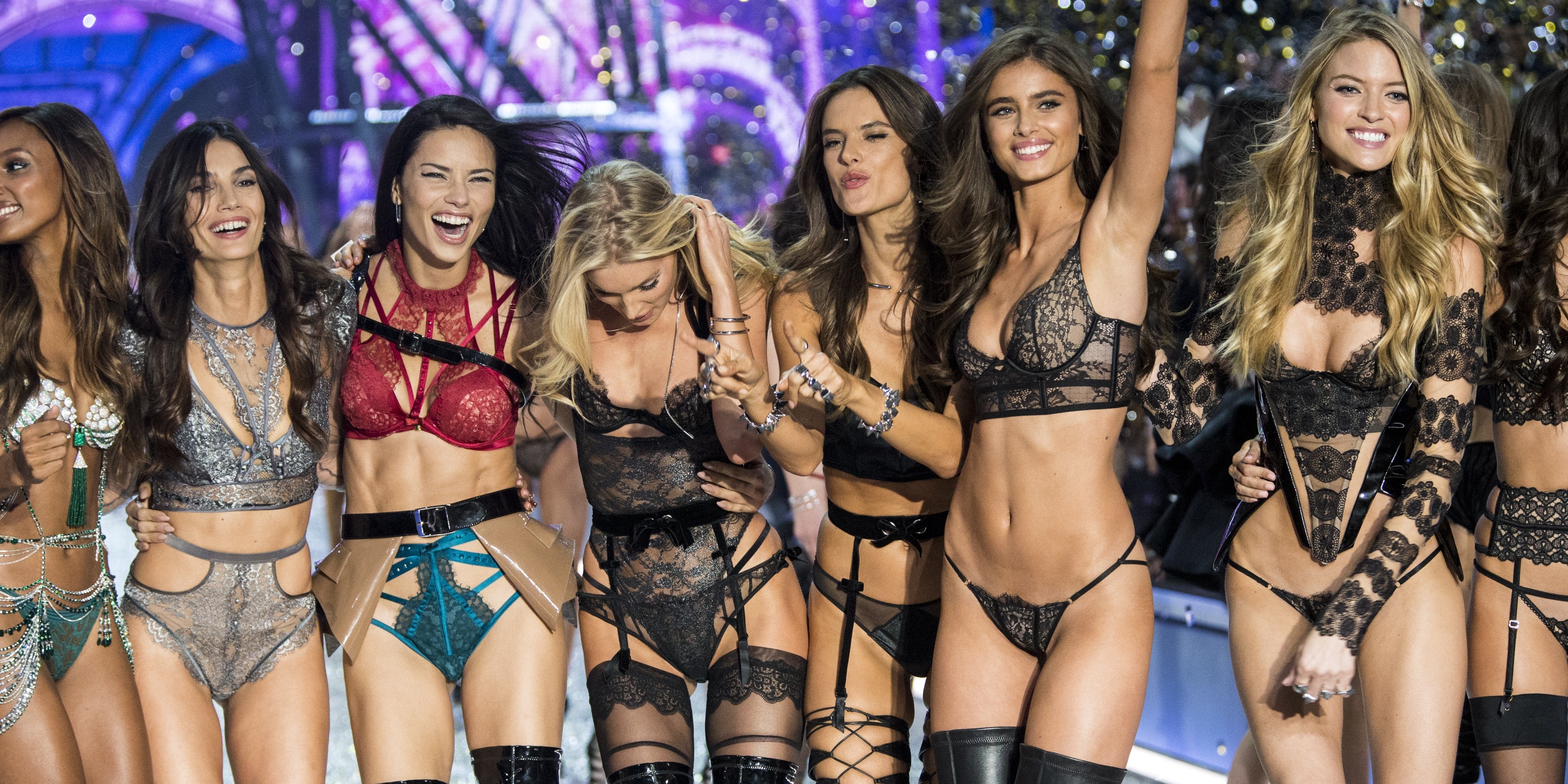Why Victoria’s Secret’s Inclusive Rebrand Is Too Little, Too Late
The damage is already done.
 FashionStock / Shutterstock
FashionStock / Shutterstock Rising from the ashes of size-0 models and rhinestone-covered angel wings, Victoria’s Secret is making a comeback — whether we like it or not.
Victoria’s Secret is rebranding with the help of an army of diverse women here to shift focus from the infamous “VS Angels” by advising and collaborating with the brand on all things inclusivity.
The first seven women who will be joining the “VS Collective” are:
— Indian actress, singer and producer Priyanka Chopra Jonas, 38
— Brazilian transgender model and activist Valentina Sampaio, 24
— American professional soccer star Megan Rapinoe, 35
— British-born Swiss-American biracial model and inclusivity advocate Paloma Elsesser, 29
— South Sudanese-Australian mental health advocate and model Adut Akech, 21
— English journalist, photographer, GirlGaze founder and equality advocate Amanda de Cadenet, 49
— Chinese world champion free skier, youth and women's sports advocate and model Eileen Gu, 17
Victoria's Secret, in its own words, is planning to "build new, deeper relationships with all women" through “revolutionary” and “inspiring” collections and content.
But can a brand that has spent decades peddling a narrow, uninclusive form of femininity shake the shadows of its past?
Victoria’s Secret is attempting to rebrand its misogynistic past.
Founded in 1977 as a store where men could shop for lingerie for their partners without feeling embarrassed, the brand has taken 44 years to even consider detaching themselves from the male gaze.
Victoria’s Secret, with their “Fantasy” and “Bombshell” bras, have always been selling women an aspiration of what they “should” be — as defined by a patriarchal society — rather than what they are.
In 1995, the company launched Victoria’s Secret Fashion Show. For over two decades toned, leggy models like Heidi Klum and Adrianna Lima promoted the brand’s idealized, often sexualized type of woman.
Speculation about the models’ diets and training programs were a staple in the show’s press coverage.
Diversity wasn’t an ethos the brand engaged with often. Victoria’s Secret didn’t welcome their first Black Angel until 2019 — though a handful of other Black models had worked for the brand previously.
To this day, a plus-size model has never been featured on their runway.
Scandals rocked the brand for years.
The implicit misogyny in Victoria’s Secret’s branding wasn’t the only scandal the lingerie empire faced.
In 2018, Victoria’s Secret’s chief marketing officer Ed Razek came under fire after responding to a question about why the brand doesn’t include trans models by saying, “Because the show is a fantasy.”
The following year, the company’s chief executive Leslie H. Wexner was scrutinized over his close ties to sex offender Jeffrey Epstein.
This prompted an investigation that revealed how Razek and Wexner had presided over a culture of sexual harassment, bullying, and misogyny.
And though the pair will not be part of the new Victoria’s Secret, their past means that the brand name has become synonymous with a culture of profiting off women while exploiting them.
Rihanna's Savage X Fenty line stuck a huge blow to Victoria’s Secret.
All while Victoria’s Secret was remaining stubbornly blind to generational change and a movement toward equality, other brands have found their success by being exactly what Victoria’s Secret wasn’t.
Victoria’s Secret’s rebrand isn’t the revolutionary change of heart it’s claiming to be. It’s coming to us in a trail blazed by Rihanna’s Savage X Fenty lingerie.
While Victoria’s Secret was selling male fantasies to women, Rihanna was telling her customers “women should be wearing lingerie for their damn selves.”
In September 2019, the first Savage X Fenty show aired with a cast of racially diverse, trans, disabled, and plus-sized models.
By November, Victoria’s Secret had canceled their show for good.
This female, Black-owned brand got it right the first time around, not because Rihanna invented a whole new brand of woman, but because she gave us what we always needed to see — ourselves.
So, it’s hard to forgive Victoria’s Secret for being so slow on the uptake.
Is Victoria’s Secret's new plan inclusivity-washing?
It’s undeniable that Victoria’s Secret is in need of a rebrand, even the brand’s glacial pace of change is better than sticking with their old ways.
However, the lingerie company could do with being a bit more honest about where their sudden interest in inclusivity has stemmed from.
Diversity and inclusivity sell. While Savage X Fenty’s sales have continued to grow since its launch, Victoria’s Secret’s sales have plummeted.
Copying this tried and true model of appealing to a generation hellbent on social justice, Victoria’s Secret’s stab at diversity seems skin deep.
One of the reasons Savage X Fenty works so well is because Rihanna has been advocating for diversity her brand promotes for years.
In an age where we expect more from fashion companies and the people running them than glossy advertising, Victoria’s Secret needs more than just a cosmetic transformation.
Alice Kelly is a writer living in Brooklyn, New York. Catch her covering all things social justice, news, and entertainment. Keep up with her on Twitter for more.
